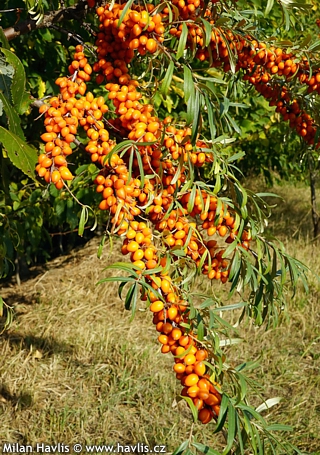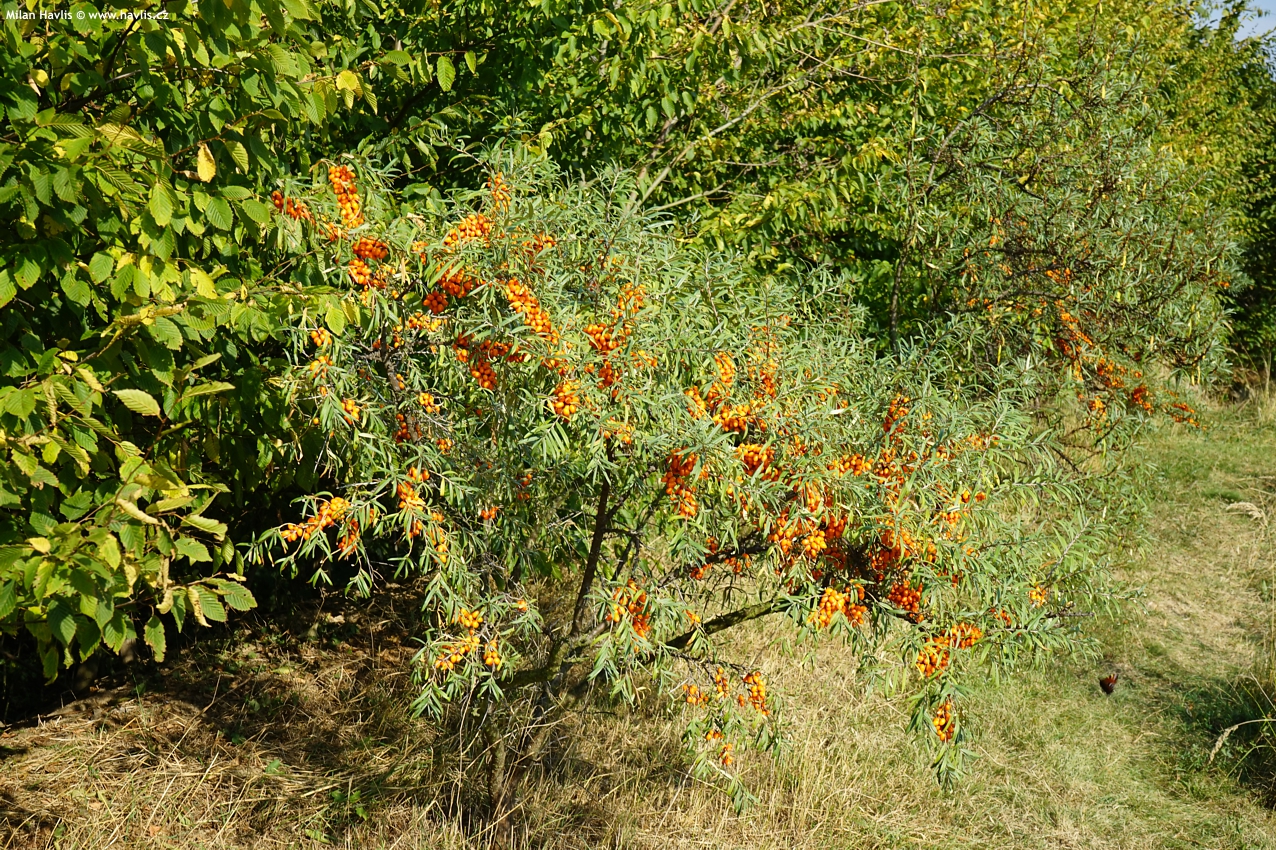Hippophae rhamnoides + ODRŮDY sea buckthorn
size/type
taller shrub,taller shrub
usual height
2-4m
usual width
2-4m
leaves
deciduous broadleaf
colour of leaves
flowers
insignificant or non-blooming
blooming time
March-April
location
full sun
USDA zone (lowest)
4 (down to -34°C)
winter protection
for zone 5+6

for zone 7

categorized
Description of the plant:
Sea buckthorn is getting more and more attention as a healthy type of fruit of high medicinal value. Some gardeners may not like its and broomy appearance, while others may welcome its wild and rampant image. It is a deciduous, wide spreading bush with silvery leaves. Branches bear sharp thorns which make picking up a bit of a nightmare. However, the oval, bright orange fruit is definitely worth the effort as it contains as much as 10 times more vitamin C and other vitamins and minerals in perfect balance ideal for Europeans. A single berry contains a sufficient dose of vitamin C for an adult per day.
Sea buckthorn is a dioecious plant (except for 'Friesdorfer Orange' which is self-fertile) that needs both male and female plant to set fruit on female plants. One male plant can pollinate up to 5 female plants. Pollen is distributed by wind so place your male plant in front of the female in the direction of wind. Fruit appears on 2-years old wood and ripens in September and October and is best picked up when frozen as it contains a lot of juice and mature fruit is soft. The best way to pick the fruit up without being injured by the thorns is to place a clean sheet under the shrub when the temperature is up to -10°C and shake the fruit off. Or a more comfortable way suggests to cut off fruiting branches and put them into a bag and then into freezer. Remove them in a couple of days and smash them onto a table while fallen down fruit remains in the bag.
It grows naturally on dry, sandy soils at seacoasts and street embankments. It prefers neutral to slightly alkaline, well-drained soil. It likes to spread with suckers. Fully hardy to -34°C (USDA zone 4).
Last update 06-02-2010
QUICK PRICE OVERVIEW
CURRENTLY SOLD OUT
















